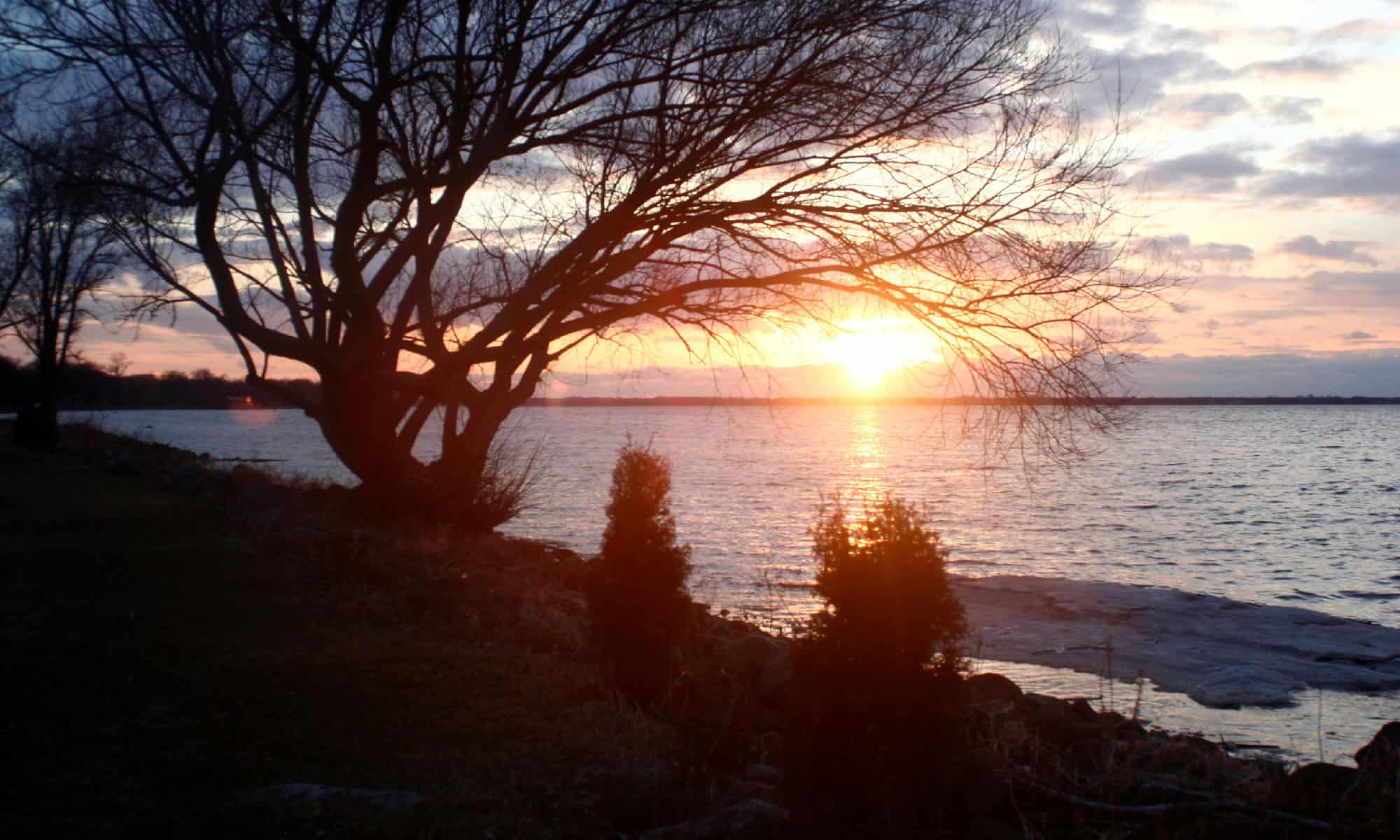Wisconsin is a boater’s dream, with 15,000 lakes within its borders. Some of these lakes are quite large and play an important role in the culture and economy of the state. Lake Winnebago is one such lake. How wide is Lake Winnebago at its widest point? Read on for a discussion of this and more.
Facts About Lake Winnebago
Lake Winnebago is the largest lake contained entirely within the borders of Wisconsin. It is a natural lake, formed when glaciers receded 12,000 years ago, and ice blocked water from entering Lake Michigan. There are shallow reefs and a few islands along the west shore, but the east shoreline drops off quickly. The lake serves as a source of water for industry and a few municipalities. Boating, fishing, and other recreation forms occur on the lake and in the surrounding parks. During the winter, the lake ices over, allowing for ice fishing, a popular lake activity. That same ice tends to pile up when it is thawing, and the March winds “shove” it onto the shore.
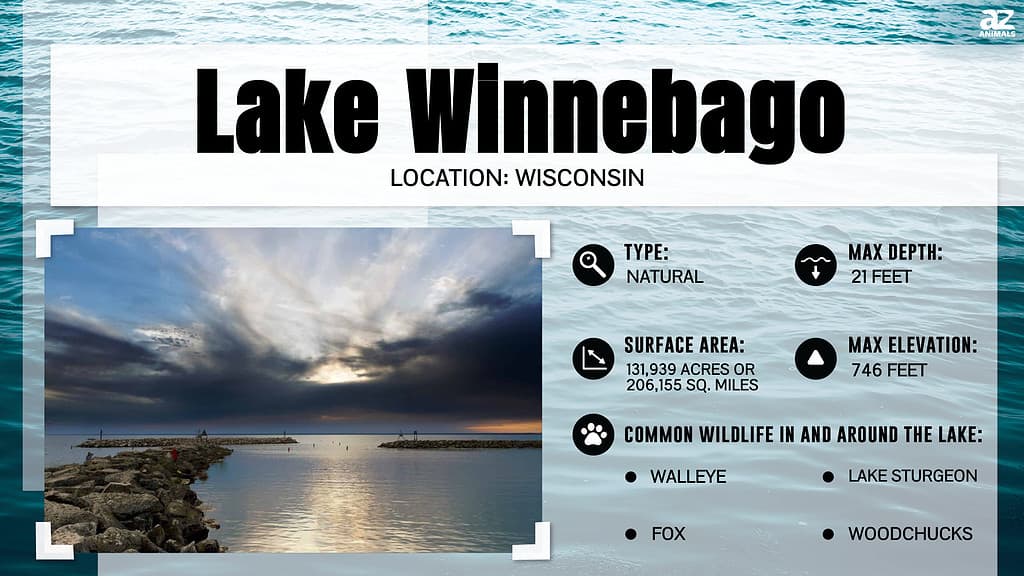
Size of Lake Winnebago
At its widest point, Lake Winnebago is a little over 10 miles across. At 28 miles long, the lake has a surface area of 206.155 square miles (131,939 acres). The lake is shallow, with a maximum depth of 21 feet. Its shoreline totals about 88 miles.

Lake Winnebago is about 10 miles wide.
©BlueBarronPhoto/Shutterstock.com
Where is Lake Winnebago?
Lake Winnebago is located in Wisconsin, about 30 miles west of Lake Michigan. Cities around Lake Winnebago include Neenah, Appleton, and Kaukauna along its north shore, Oshkosh on its western shore, and Fond Du Lac on its southern shore. Green Bay is almost 18 miles to the northeast of the lake.
How Long It Would Take to Swim Across Lake Winnebago
The average swimmer at 2 mph can cover the lake’s width in about five hours on a calm day. In 2021, Ian Riddlehoover, a teenager, swam a shorter portion of the lake in about 5 hours to raise money for cancer research. Due to weather concerns, he was forced to begin his swim from the Grundman County Boat Launch instead of Oshkosh, which reduced the swim length to about 8 miles.
Nutrition and hydration break. This kid is killing it!! pic.twitter.com/q6isYzdDCE
— Making Waves (@MakingWavesLLS) June 23, 2021
How the Size of Lake Winnebago Compares to Other Lakes
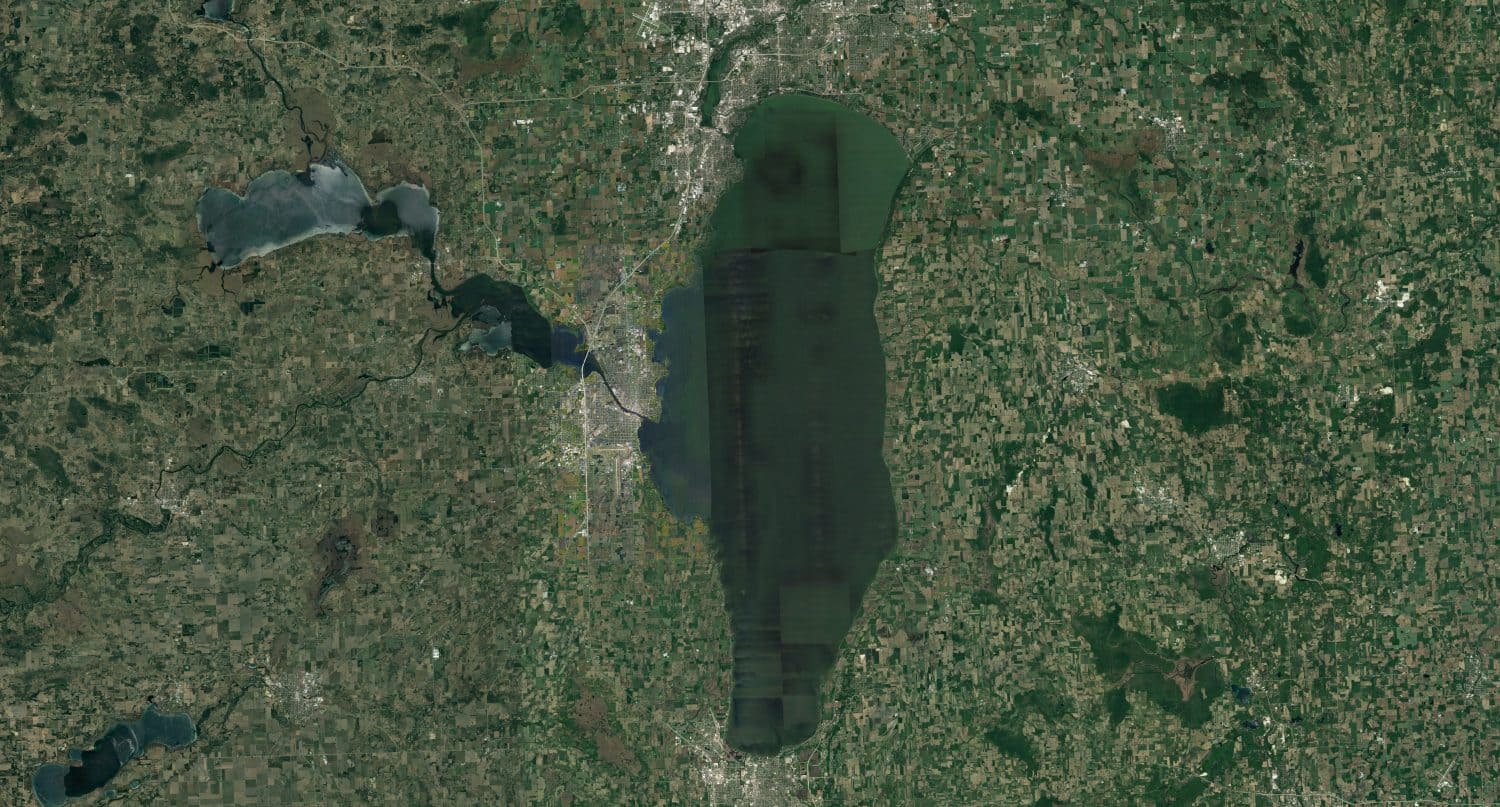
Lake Winnebago is Wisconsin’s largest inland lake.
©Rumi designs/Shutterstock.com
Lake Michigan
A natural comparison, given its proximity, would be Lake Michigan. This Great Lake dwarfs Lake Winnebago with a surface area of 22,404 square miles. It is over 300 miles long and has a maximum width of 118 miles. Its shoreline measures about 1,400 miles.
Geneva Lake
Geneva Lake, located near the southern border of Wisconsin, is much smaller than Lake Winnebago. It measures 7.7 miles long by 2 miles wide with a surface area of about 8.4 square miles. The shoreline measures about 21 miles. There is a popular 26-mile walking path that follows the lakeshore.
Lake Tahoe
Lake Tahoe measures 22 by 12 miles, with a surface area of 191 square miles. Situated in the Sierra Nevada Mountains between California and Nevada, it is the second-deepest lake in the country, with a maximum depth of 1,645 feet. Its shoreline stretches 71 miles.
Things to Do At Lake Winnebago
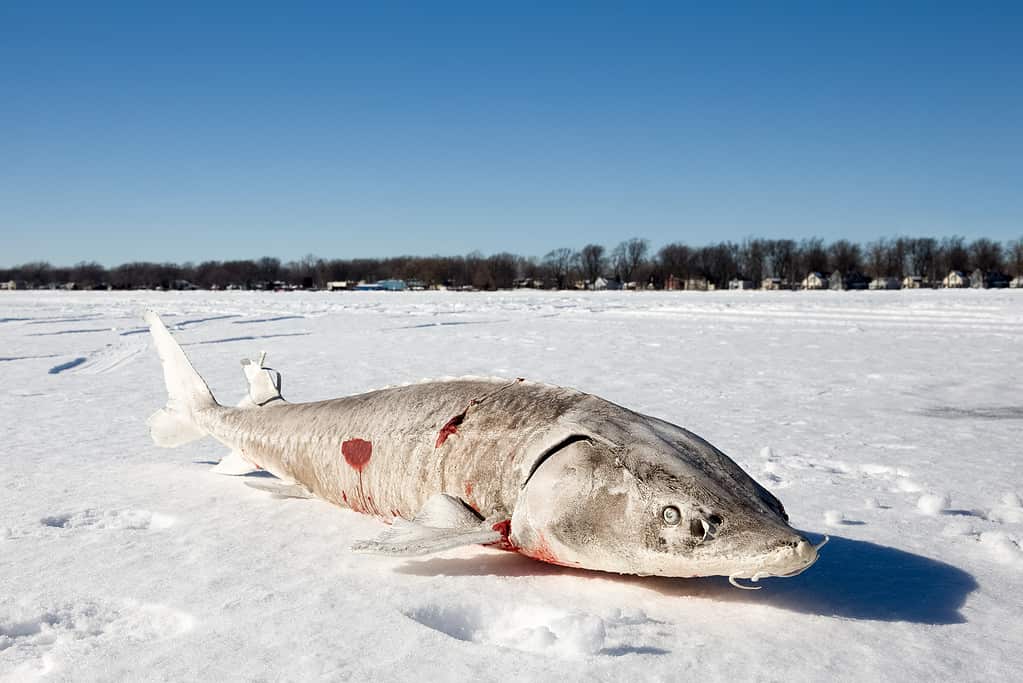
Spearfishing of lake
sturgeon
is permitted during a 16-day fishing season in February. The Wisconsin Department of Natural Resources strictly enforces quotas.
©iStock.com/Jim_Pintar
Fishing is a very popular activity on Lake Winnebago. It’s an excellent spot for sauger and walleye; anglers can also take in the occasional perch and white bass. Bluegill, crappie, catfish, and pike are also popular gamefish. February is the legal season for spearfishing sturgeon.
With all of that recreational fishing, boating is another popular activity. Anglers have their boats on the water, but there is also pleasure boating. Lake Winnebago may be one of the busiest internal waterways in the state.
Several state and municipal parks surround the lake, including High Cliff State Park, Lakeside Park, and Menominee Park. These parks offer an enjoyable combination of boating, picnic grounds, camping grounds, recreational fields, hiking trails, and various other amusements.
Wildlife Around Lake Winnebago
In addition to white-tailed deer, eastern gray squirrels, and eastern cottontails, the Lake Winnebago watershed contains diverse wildlife. Some of the more prominent animals are discussed below.
Lake Sturgeon
The ancient lake sturgeon is a massive fish (reaching weights of up to 240 pounds) popularly hunted by a spear on Lake Winnebago in February. These fish have four organs known as barbels hanging around their lips, which allow them to sense prey on the lake bottom. The fishing season is 16 days long and has a quota. Once the quota is reached, the fishing season ends on the following day.
Red Fox
Around the shores of Lake Winnebago, you may spot the red fox. This predator is one of the most recognizable animals with its bushy tail, red coat, erect ears, and pointed nose. It’s a fairly small canid, about 26 to 42 inches long and weighing only about 20 pounds.
Groundhog
The groundhog, sometimes known as the woodchuck (or the whistle pig), is a large rodent that belongs to a group known as marmots. They build incredible tunnel networks, can swim, and warn one another of danger through a unique whistle-like call.
Painted Turtle
North America’s most widespread aquatic turtle, the painted turtle, can be found around shallow waters like the western shore of Lake Winnebago. This wide-shelled, dark-skinned reptile has bright, colorful stripes on its neck and head. It likes to sun itself on rocks and logs in the water, though it is also commonly taken as a pet.
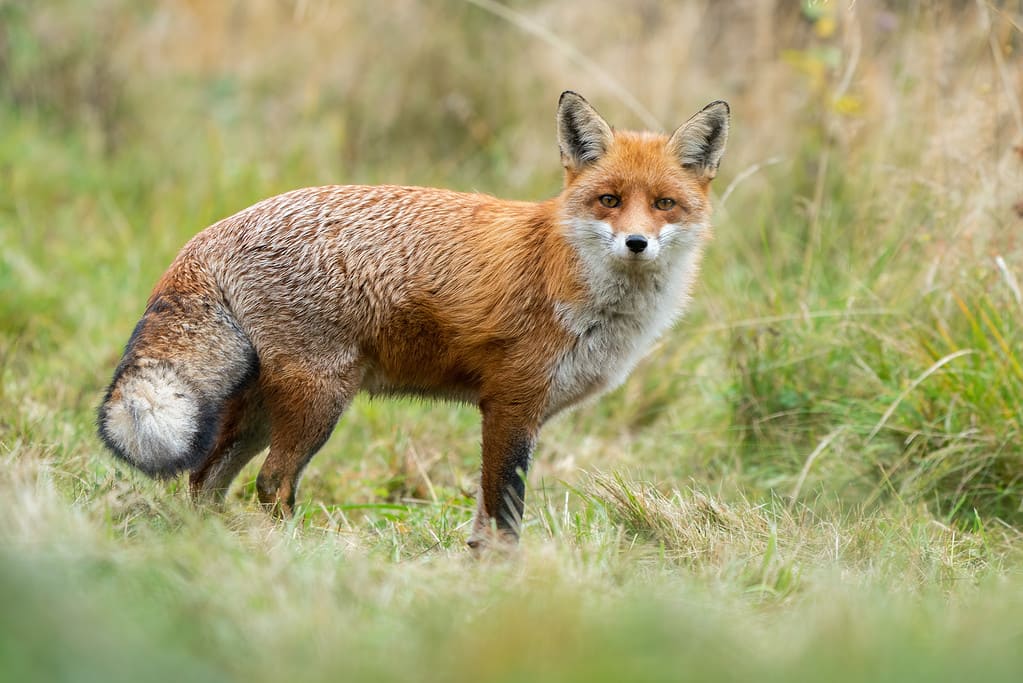
The red fox may be seen hunting around Lake Winnebago.
©JMrocek/ via Getty Images
Thank you for reading! Have some feedback for us? Contact the AZ Animals editorial team.

